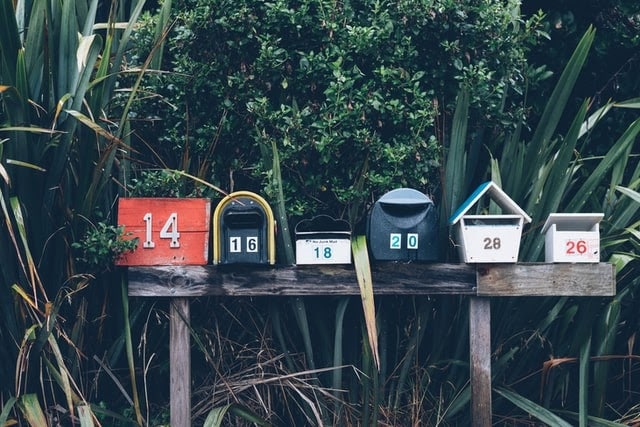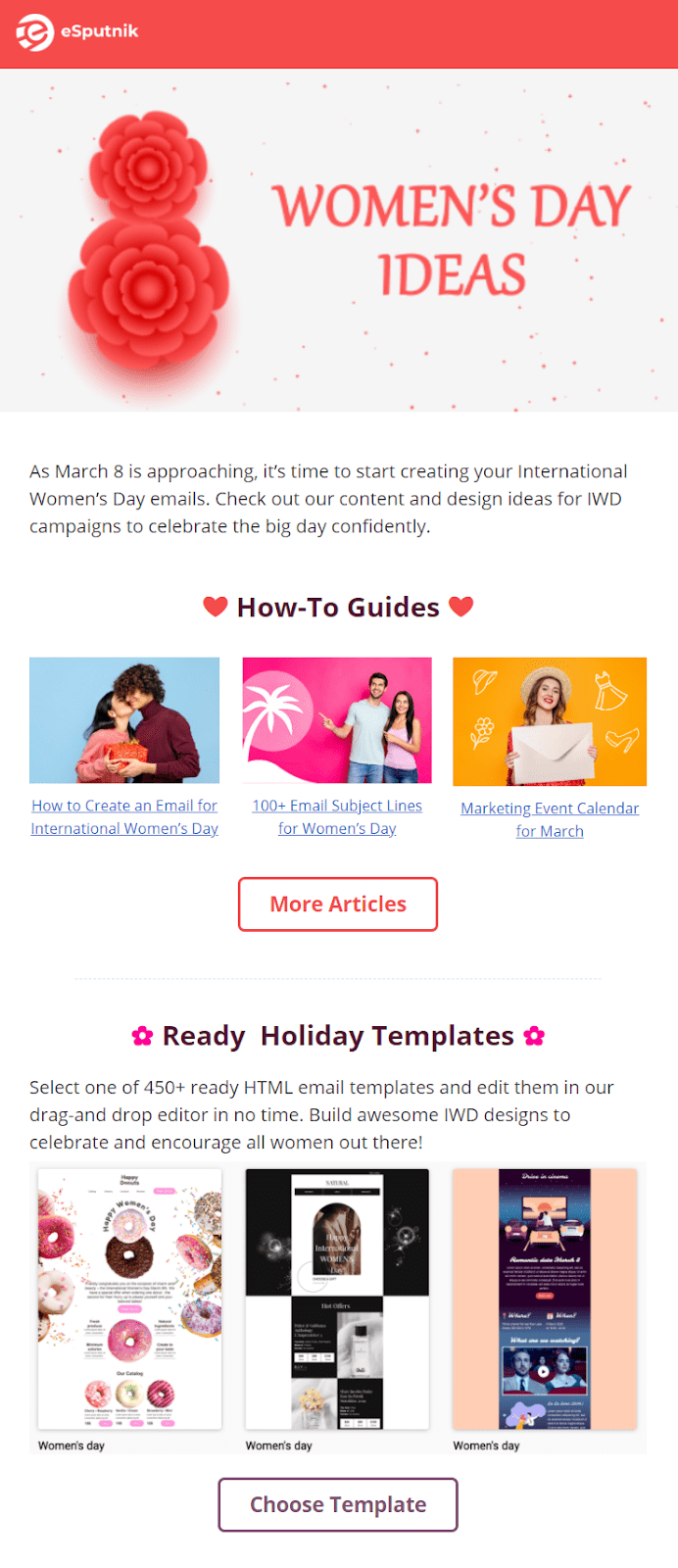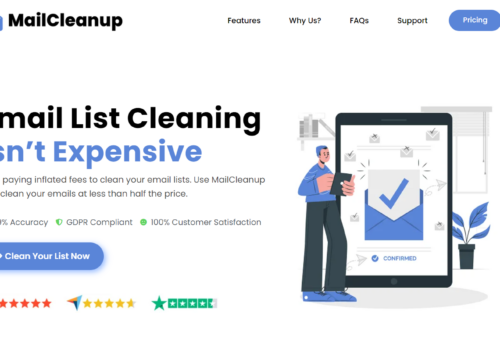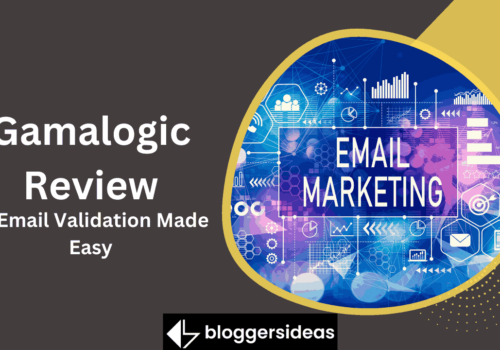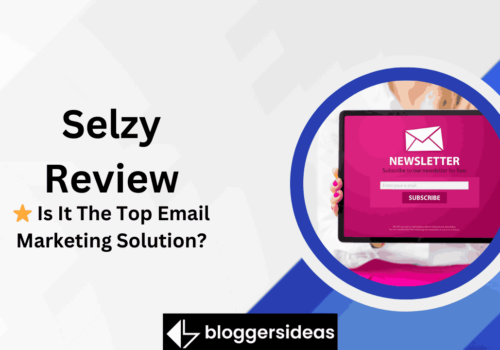Email has been a major marketing channel for many years, and it is unlikely to stand back any soon. Not after the Covid-19 has made already digitized business processes move even deeper into online. All indicators are that digital communication through emails, messengers and SMS will be a dominant model in 2021 and further.
In its turn, a newsletter remains an important component of email marketing helping educate people on your product and nurture leads. And although a lot has been said about email strategies, many still find it difficult to come up with a solid newsletter strategy. Let’s see how to avoid this difficulty and send effective newsletters in 2021.
What Is a Newsletter and Why You May Need It
A newsletter is a separate type of email campaigns that have a clear marketing purpose: educate people on your company and services. Unlike promotional emails, newsletters don’t aim to generate instant sales. Their task is to give people food for thought in the form of useful content applicable to their interests. It can be news, blog articles, how-to guidelines, tutorial videos and event recordings, podcasts, DIY tips.
Typically, newsletters don’t contain sales pitches, ad images or direct CTAs. You’d rather find there Read More, Learn How or Explore instead of Shop Now, Buy or Order.
A well-thought newsletter strategy is important for B2C and crucial for B2B. When you don’t run regular promos or holiday sales and sell products that are rarely updated, a newsletter is one of few things to keep the conversation with your audience going.
Example of a B2B blog newsletter by eSputnik
Newsletters don’t necessarily have to include your own content. Brands that don’t publish regularly can opt for a news digest, partnered content or curated content.
- A news digest is a short summary of major news applicable to your industry. Helps your subscribers navigate through the informational noise around.
- Partnered content is content resulted from a collaboration of several brands that sell different products but share the same target audience. As a rule, partnered content is promoted by all companies engaged in its creation, so apart from filling your newsletters, it also gets you coverage on other platforms.
- Curated content is content created by other companies but shared by you because it can deliver value to your audience. Technically, curated content includes a news digest but isn’t limited to it. You can write a review on someone’s work, create thematic lists of whatever content or ask different authors to contribute to your newsletter.
The main condition for using third-party content is giving active links to the original piece and crediting all contributors.
Why to Send Newsletters in 2021
- Give info about your product. New subscribers don’t know much about your company and want to investigate before making a purchase decision.
- Keep people updated on your recent activities, arrivals and releases.
- Keep your company on top of the minds of existing customers. If you sell products with a long shelf life (cars, houses, appliances), seasonal products (holiday-related decorations, vacation tours, BBQ and gardening tools) or luxury goods (watches, jewelry, antiques), people don’t buy from you every two weeks. Regular newsletters help you not get forgotten on the way to the next purchase.
- Deliver useful content to earn a reputation of a worthy sender. Subscribers are more likely to open your messages knowing they’ll find something for them inside. This is good for your general open rate and sender reputation in the eyes of email clients.
- Build a professional brand image. Useful and consistent newsletters with relevant info inside contribute to your brand reputation.
- People see it as follows: if you put effort into making good emails, you most probably put effort into making a good product and you can be trusted.
Build a community around your brand. An engaged audience is more likely to become a loyal audience.
How to Get Started with Sending a Newsletter
If you’re new to email marketing and only starting to work on email strategies, the below tips will help you move in the right direction.
Build a Contact List.
To send emails, you first need to have someone to send them to. Add a subscription form on your website and social media. Make it simple, with a maximum of two required fields for a name and email address. Later, you’ll be able to add more if needed or introduce subscription preferences management.
Choose a professional email service provider.
The reputation of your provider will determine the success of your campaigns so choose it wisely. What’s more, choose a provider with extensive segmentation functionality, fast event processing and integrations with as many external platforms. As your business grows, you’ll need more complex solutions. If your current provider can’t satisfy it, you’ll waste time on new software selection and migration to it.
Send relevant content.
A newsletter is an informational email in the first place. People don’t expect to see tons of direct ads, promo codes or sales pitches in it. You have your promo emails to send these. If you’re too pushy and focused on selling only, people will simply unsubscribe.
Set a sending schedule.
Set a frequency schedule for your newsletters, explain when to hear from you (say, on Tuesdays) and stick to it. If you’re sending too often, you may end up with unsubscriptions; if you’re sending too rarely, people will forget about your existence and find a more communicable company.
Clean your list on a regular basis.
As your email list grows, it will include more and more fake addresses, misspelled addresses or spam traps. Some addresses will stop existing with time. To avoid sending emails to all of them, validate your contact base to ensure its hygiene. By sending to a poor list, you waste money and hurt your sender reputation.
Quick Links
- Squirrly Reviews Online
- 15 Best Email Marketing Services
- Engagebay Vs MailChimp: Which is the Best CRM platformWishpond vs Mailchimp: Which One Should You Pick?
To Sum Up
A newsletter is a proven way to tell people more about your product, nurture leads and stay in touch with your audience. Newsletter types differ depending on your product or service. Choose the one that fits your company’s goals and meets your customers’ expectations. Set a sending schedule and follow it. Respect your customers’ time and don’t bombard them with irrelevant offers in emails that aren’t designed for it.
Author’s Bio
Iuliia Nesterenko is a technical writer at eSputnik. Her focus is on exploring current digital marketing trends and describing new strategies for email marketers.

